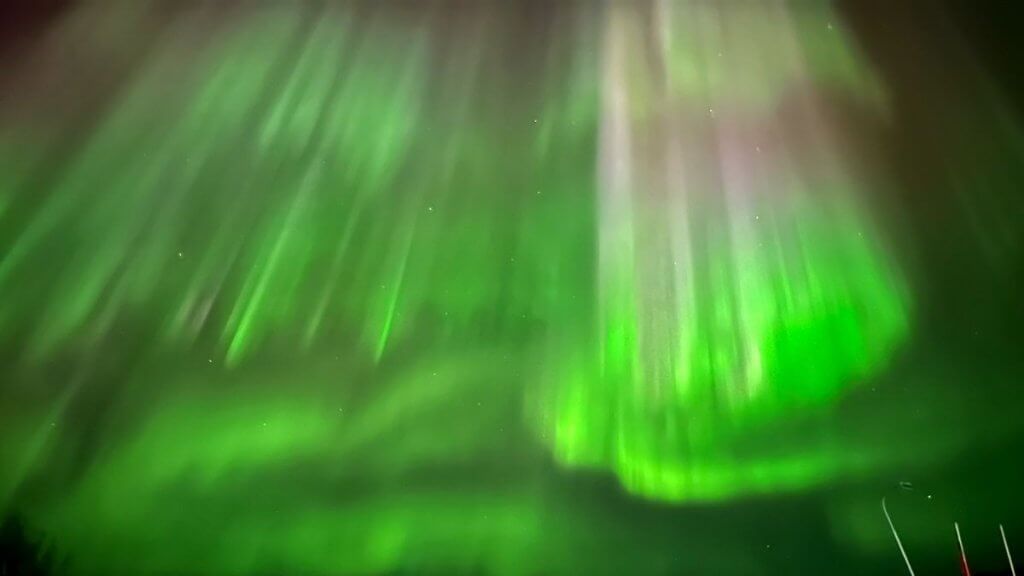
Historic magnetic storms help scientists learn what to expect when one hits (Image Credit: Space.com)
As someone who never lived in the extreme northern latitudes of Earth, I always found it exciting when I heard auroras might be visible farther south. I would always crane my eyes skyward, hoping I could see those ghostly dancing lights, almost trying to wish them into existence. Alas, I was never that lucky. Though as we approach solar maximum in 2025, we ought not to only get excited about seeing auroras, but perhaps also ask: What could a powerful geomagnetic storm do to our technological infrastructure?
Geomagnetic storms can be triggered by either coronal mass ejections, giant bubbles of plasma erupting from the surface of the sun, or very powerful solar flares. It’s because these events can accelerate particles to extremely fast speeds. And when some of those particles hit the Earth’s magnetic field, this generates what we see as brilliant auroras — however, those particles can also damage satellite equipment and even harm astronauts in orbit.
A truly gigantic magnetic storm has not affected the Earth in well over one hundred years — and since then, technology has changed quite significantly. Satellite communications, air travel and the power grid have been brought into existence, and they all can be impacted by these events. Yet, scientists aren’t quite sure what, exactly, would happen to the integral technological components of society if a major solar storm shrouded Earth with charged particle showers.
Related: Powerful solar storm supercharges auroras and STEVE around the world (photos)
This led an international team consisting of scientists hailing from nine different countries to delve into the historical record, examining some of Earth’s most massive magnetic storms to understand what might happen to our infrastructure when one happens again.
Two of the most massive magnetic storms known are the Carrington Event of 1859 and the New York Railroad Superstorm of 1921. The study, however, also identified another storm named the Chapman-Silverman storm of 1872. And boy, was it a doozy.
During this storm, the auroras were seen as far south as Mumbai, India. Telegraph communications between Mumbai and Aden, Yemen, as well as between Cairo, Egypt and Khartoum, Sudan, were disrupted for hours.
“This means that we now know that the world has seen at least three geomagnetic superstorms in the last two centuries,” Hisashi Hayakawa of Nagoya University, lead author of the study, said in a statement. “Space weather events that could cause such a major impact represent a risk that cannot be discounted.”
The team argues that, with our increased technological infrastructure, it is important to consult the historical record of magnetic storms to understand what to expect when one happens again. The team looked at the historical sunspot records, terrestrial geomagnetic records, and visual accounts of aurora from around the world. For example, the team discovered that the Chapman-Silverman storm originated from a medium-sized sunspot group. This type of information might help us prepare for future space weather.
“Such storms could be big enough to knock out the power grid, communication systems, airplanes and satellites in the worst case,” says Hayakawa. “Could we maintain our life without such infrastructure?”
Will we see a massive geomagnetic storm in the coming years? Well, if we do, hopefully this study will be one step to help us prepare in time.
A paper about these results was published on Dec. 1 in The Astrophysical Journal.





